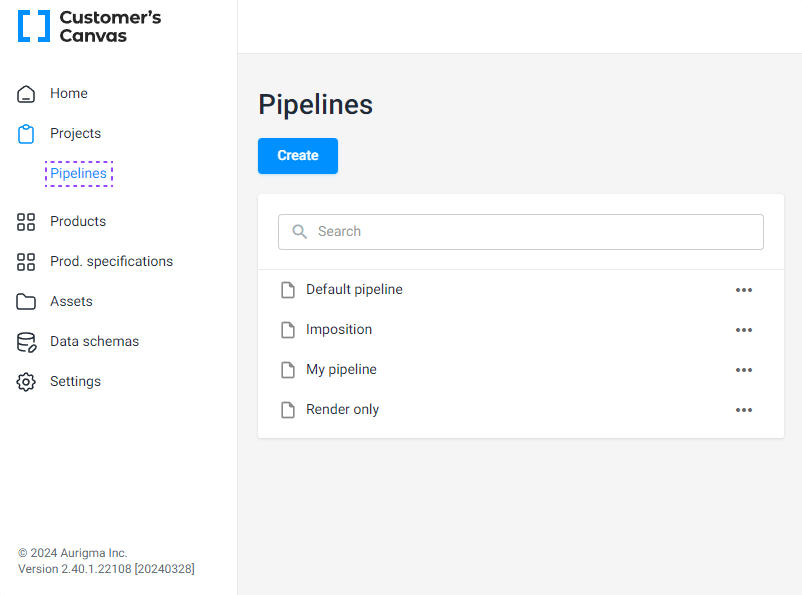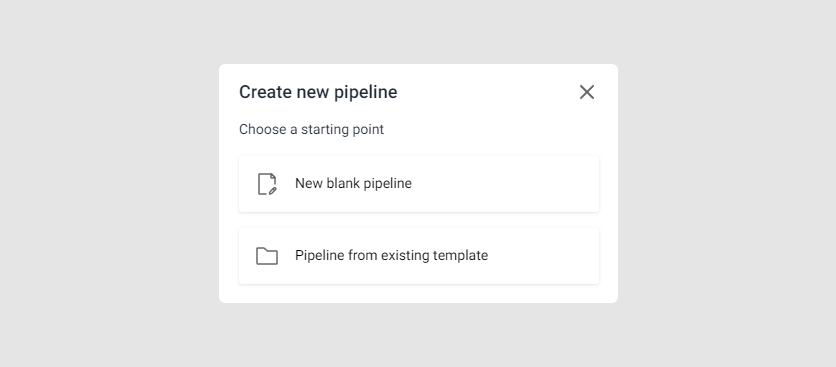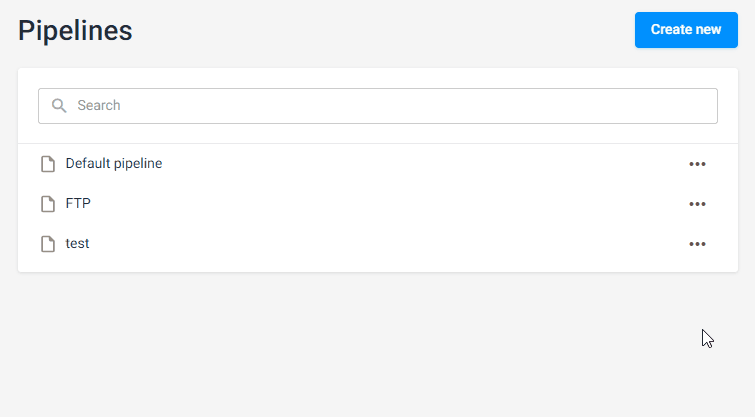Order processing pipelines
A pipeline is a series of tasks or operations aimed at processing an order from an e-commerce system, for example, rendering a PDF file, post-processing the PDF file (like imposition), or delivering results to the client via FTP or to the order processing system. The pipeline runs when Customer's Canvas creates a project and moves it to the corresponding state. As a result of this series of operations, we get artifacts such as print files or supporting images.
Where to find it?
In Customer's Canvas BackOffice, the Pipelines page provides access to all created pipelines, enabling manipulation and management.

Manipulating pipelines
A pipeline represents a file in the JSON format. For more details about its structure, refer to Concepts.
Creating pipelines
To create a new pipeline, navigate to Pipelines and click the Create button. This will open the following dialog box to choose a starting point.

The New blank pipeline option allows you to define a pipeline from scratch using a JSON file editor.
The Pipeline from existing template option opens a selected pipeline as a template.
You can edit pipelines in the same way as you edited personalization workflows in the JSON editor.
You can begin designing your pipeline by exploring the default example.
After you have created a pipeline, you can duplicate, edit, rename, and delete it, if needed.
Duplicating a pipeline
To create a copy of a pipeline, click the ellipsis next to its name and select Duplicate.

Editing a pipeline
To edit an already created pipeline, click the ellipsis and select Edit.

Renaming a pipeline
To rename a pipeline, click the ellipsis and select Edit. In the Name text box, change the name and click Save.

Deleting a pipeline
To delete a pipeline, click the ellipsis and select Delete.

Working with pipelines
When setting up products, you must specify which of the pipelines will be used after ordering this product. If you have at least one pipeline in the admin panel, then a Processing pipeline field will be available for selection.

If you use product specifications for products, then this field appears as follows:

After the user has completed the purchase on your site, a project is automatically created for this order. At the same time, a processing pipeline is attached to the project and run.
After the pipeline is completed, you can view a report with the results of the pipeline execution on the project page. On the Jobs tab, you can find a list of the completed tasks with their status and elapsed time. On the Results tab, there is a list of the links to the artifacts available for download.

If a task in the pipeline fails, an error message is displayed, and you can restart such a pipeline with the Restart pipeline button.
In the Projects section, you can learn about working with pipelines.